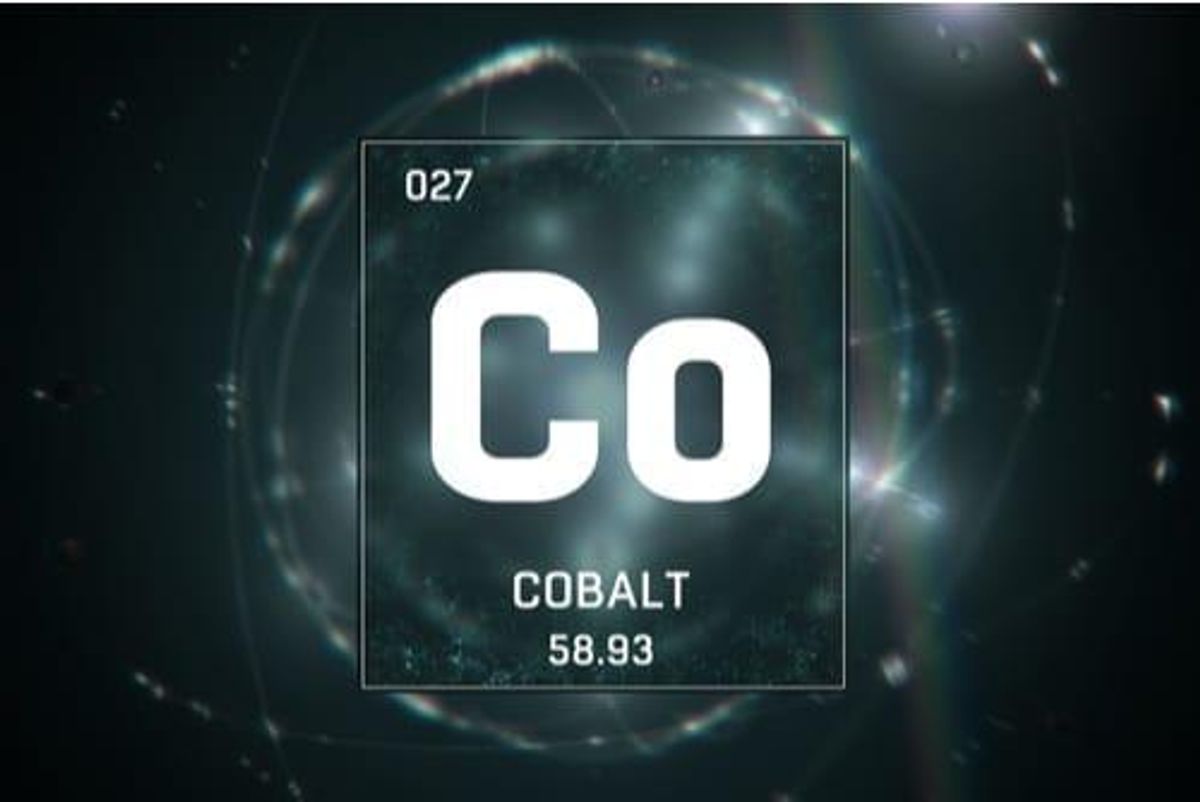OPINION - Cobalt’s 3 Month Price Hike a Sign of Things to Come?

Cobalt has seen wild price swings in the past — is this time different? Anthony Milewski of Nickel 28 Capital shares his thoughts.
This opinion piece was submitted to the Investing News Network (INN) by Anthony Milewski, who is an external contributor. INN believes it may be of interest to readers and has copy edited the material to ensure adherence to the company’s style guide; however, INN does not guarantee the accuracy or thoroughness of the information reported by external contributors. The opinions expressed by external contributors do not reflect the opinions of INN and do not constitute investment advice. All readers are encouraged to perform their own due diligence.
By Anthony Milewski, Chairman of Nickel 28 Capital
Following a 60 percent gain over the past three months, the price of cobalt has pulled back from a recent high of US$25 per pound to about US$21 as the market enters a profit-taking phase and in the absence of Chinese buying.
There is nothing unusual about this and doesn’t change the perceived view that the long-term macro trend is still up even if this involves micro zigzags within the upward trend. The critical battery metal has seen wild price volatility before, reaching a high in 2018 before plummeting to recent lows in 2020. But this time, there is reason to believe it’s different.
Previous price rallies have been predicated mainly on an approaching wall of anticipated future demand. However, soaring demand for these batteries’ use in electric vehicles (EVs) means we have now reached the point at which the price growth is based on actual demand and not projections and expectations like in the past.
As EV production edges closer to cost parity with legacy internal combustion engine-driven vehicles, demand growth is not expected to drop off any time soon. It’s also worth noting that EVs are not the only demand drivers. Cobalt is critical in developing superalloys for the aerospace and medical industries. While the COVID-19 pandemic had essentially scalped demand from the aerospace sector, this will become an added cobalt price booster once airplane manufacturing ramps up in a post-COVID economy.
While there is occasional hype around the idea that cobalt will be engineered out of batteries, the reality is that current and next-generation battery chemistries all rely on the metal to perform a crucial safety role. Put simply: cobalt stabilizes the cathode component of lithium-ion batteries, helping to ensure they do not catch fire. This is not something that battery manufacturers and end users want to take chances with. So, while Elon Musk has made big announcements about Tesla (NASDAQ:TSLA) and its partners designing a battery without cobalt, Tesla also signed a considerable five year cobalt supply agreement with Glencore (LSE:GLEN) last year.
Batteries may contain less cobalt these days, but in the future there will be considerably more batteries required, and thus the net amount of cobalt required will increase nevertheless.
Add to the mix renewed generalist investor appetite for mining and metals as a favorable asset class, and only a handful of dominant players in what is in fact a small market, and one essentially has a perfect storm underpinning the metal’s price trajectory over the foreseeable future.
While the price appears to be settling and at the higher level, perhaps around the US$20 level, it also seems to be setting a new base and a platform for continued growth. Where a previous base stalled around US$13 to US$15, the new base might likely settle around US$18 to US$21.
Another reason cobalt’s price trajectory is more sustainable this time is the focus on global economic recovery. With unprecedented stimulus programs being rolled out to establish a new global green economy in the wake of the COVID-19 pandemic, electrified transportation is at the heart of the new green reality. Also, in contrast to previous rallies, the world now has substantially larger battery manufacturing capacity — one that continues to grow exponentially.
It’s also pertinent to mention that with the global vaccine rollout underway, there is a sense of renewed sentiment that could swiftly translate to a post-COVID economic boom in consumption. This in turn would feed into higher demand for the raw materials needed to manufacture the commodities people want, such as EVs.
There are also a number of factors that amount to a considerable level of vulnerability on the supply side. The metal is predominantly the co-product of copper production in the Democratic Republic of Congo (DRC), accounting for about 70 to 80 percent of global cobalt output.
However, the DRC presents a challenging environment to work in. Logistics remain a challenge, and political upheavals occur regularly. Further, reports of forced labor and child labor continue to taint the market for downstream applications. It is a sensitive subject, and while there’s no current indication that these things are about to impact the market, should any of them materialize and cause a sudden break in supply, it would be bullish in terms of cobalt pricing.
Then we have the geopolitics element to consider. The raw material is exported to China, which holds a dominant position when it comes to processing cobalt concentrates into usable materials for batteries. However, the country prioritizes these value-added chemicals for domestic use, leaving the rest of the world without reliable supplies.
As far as producers go, Swiss-based Glencore has in recent years become a dominant cobalt producer, accounting for about half the world’s cobalt production at full capacity in a market of about 140,000 tonnes. It has two sizeable cobalt mines in the DRC, one being Katanga, which can produce about 28,000 to 29,000 tonnes per year and is set to ramp up to 35,000 tonnes.
However, given the low copper and cobalt prices in late 2019, Glencore closed the mine and embarked on upgrading the facility. It has not yet guided an expected restart, and while such a sizeable addition to the small market might cause prices to drop once more, Glencore is unlikely to shoot itself in the foot by oversupplying the market.
In short, cobalt’s price trajectory is based on more sustainable factors this time around. As the world increasingly focuses on electrifying transport and invests heavily in the new green economy, cobalt, along with other battery metals, is looking at a comfortable ride upwards.
Mr. Anthony Milewski has spent his career in various aspects of the mining industry, including as a company director, advisor, founder and investor. In particular, he has been active in the commodities related to decarbonization and the energy transition, including nickel, cobalt, copper and carbon credits. Anthony has served on the London Metals Exchange Cobalt Committee, which includes representatives from the largest mining and commodities companies globally, to represent the interests of the industry to the board of directors the LME.



